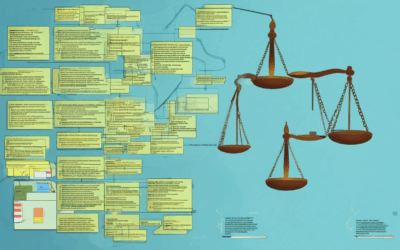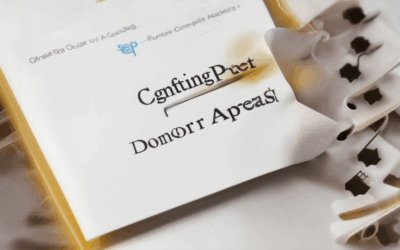In the ever-evolving landscape of fundraising, building relationships with donors remains one of the most critical aspects for nonprofit organizations seeking to sustain their missions and impact. Whether you’re working with individual contributors, foundations, or corporate sponsors, cultivating strong donor relationships is not just about securing donations—it’s about fostering trust, loyalty, and long-term partnerships that drive organizational growth. With evolving donor behaviors and increasing competition among nonprofits, it’s essential to refine your approach to donor engagement and retention.
Key Takeaways
- Building Trust and Loyalty: Establishes trust and ensures donors feel valued, leading to long-term support.
- Driving Repeat Donations: Regular appreciation and updates encourage future contributions.
- Differentiating Your Organization: Unique experiences and personalized engagement help you stand out.
- Ensuring Impactful Giving: Clear communication shows donors their contributions make a difference.
- Growing Your Donor Base: Satisfied donors become advocates, expanding your supporter network.
- Strengthening Reputation: Positive interactions enhance your organization’s image and attract more supporters.
- Fostering Emotional Connection: Building relationships through storytelling and empathy deepens commitment.
- Maximizing Fundraising Efficiency: Tailored strategies optimize resource use for mission achievement.
- Aligning with Organizational Goals: Strategic integration ensures donor efforts support broader objectives.
- Leveraging Technology: Donor management systems improve tracking and engagement effectiveness.
- Four Pillars of Donor Experience:
- Knowledge: Personalized engagement using donor data.
- Strategy: Clear objectives and outcome measurement.
- Culture: Mission-driven environments with passionate staff.
- Emotion: Authentic communication and emotional connections.
- Donor-Centered Initiatives: Tailored experiences like exclusive events and projects.
- Cultivation: Deepening relationships through personalized interactions and involvement.
- Recognition and Communication: Acknowledgment and updates reinforce donor value.
- Why Donor Relations Matter: Loyal supporters, advocacy, and community-building.
- Overcoming Challenges: Addressing fluctuating engagement and demonstrating impact.
- Successful Strategies: Innovative methods like events and impact stories boost retention.

How to Establish Relationships with Donors
To effectively build and maintain relationships with donors, consider the following organized approach:
- Regular Communication : Engage donors through consistent updates via newsletters or emails to keep them informed about organizational progress and show appreciation for their support.
- Personalization : Use donors’ names and tailor content to reflect their interests, possibly identified through surveys or tracking their engagement with previous communications.
- Express Gratitude : Send heartfelt thank-you messages and acknowledge contributions publicly through platforms like newsletters or social media to strengthen emotional connections.
- Build Trust : Be transparent about how donations are utilized, sharing financial reports or impact stories to demonstrate accountability and credibility.
- Engagement Opportunities : Invite donors to participate in events or volunteer activities to foster deeper involvement and commitment to the cause.
- Celebrate Milestones : Recognize significant achievements or contributions publicly to highlight their role in the organization’s success.
- Consistent Interaction : Maintain regular contact without excessive fundraising requests to keep donors informed and engaged, enhancing their overall positive perception of the organization.
- Understand Donor Preferences : Tailor communication strategies to align with what donors value, whether it’s impact reports or personal recognition, to make them feel understood and appreciated.
- Respect Boundaries : Avoid overwhelming donors with requests or unnecessary information to ensure they remain interested and supportive without feeling burdened.
By integrating these strategies, organizations can cultivate enduring relationships with donors, fostering loyalty and ongoing support.
How to Build Relationships with Funders
To build successful relationships with funders, consider the following organized approach:
- Develop a Strong Online Presence :
- Create a professional website showcasing your mission, past projects, and impact.
- Include a clear “About Us” section and detailed project descriptions.
- Add high-quality images and videos to enhance visual appeal.
- Place a prominent donation button for easy access.
- Leverage Social Media Platforms :
- Utilize LinkedIn to connect with funders and industry professionals.
- Follow company pages and join relevant groups for engagement.
- Share content aligned with funders’ interests to foster connections.
- Engage Consistently and Thoughtfully :
- Respond promptly to comments and messages to demonstrate attentiveness.
- Offer valuable insights or resources to establish credibility.
- Network at Events and Conferences :
- Attend gatherings focused on your cause to meet potential funders.
- Collect contact information for follow-up communications.
- Personalize Communication :
- Tailor outreach efforts with personalized emails or letters.
- Highlight alignment with funders’ interests and past contributions.
- Stay Informed About Funders :
- Research funders’ priorities through their websites and newsletters.
- Align your requests with their goals for a compelling pitch.
- Maintain Transparency and Gratitude :
- Be open about your organization’s financial status and fund utilization.
- Provide regular updates to keep funders informed and engaged.
- Seek Collaboration Opportunities :
- Explore joint initiatives or co-funding arrangements.
- Partner on projects beyond monetary support for mutual benefits.
- Recognize and Appreciate Donors :
- Acknowledge contributions publicly through testimonials or thank-you notes.
- Use personalized messages to strengthen donor relationships.
By integrating these strategies, you can effectively build and nurture relationships with funders, fostering a supportive environment for your nonprofit’s success.

The 5 Stages of Donor Development
Donor development is a critical process for nonprofit organizations aiming to secure and retain contributions from individuals or organizations who support their mission. Below, we outline the five key stages of donor development, along with actionable insights and best practices to effectively navigate each phase.
1. Awareness
The first stage of donor development focuses on raising awareness about your organization’s mission, goals, and needs. This stage is essential for building initial interest and understanding among potential donors. Key strategies include:
- Educational Content : Develop clear and concise messaging that communicates your organization’s impact and vision.
- Digital Marketing : Utilize social media platforms, email campaigns, and website content to share your story and attract potential donors.
- Events and Outreach : Host awareness events, webinars, or workshops to engage the community and introduce your cause.
2. Interest
Once individuals are aware of your organization, the next step is to spark their interest and encourage them to take action. This stage involves:
- Personalized Appeals : Tailor your communications to highlight specific areas of interest or alignment with the donor’s values.
- Storytelling : Share compelling stories of how donations have made a difference, including success stories and testimonials.
- Calls to Action : Clearly articulate how individuals can contribute, whether through donations, volunteering, or advocacy.
3. Education
To move donors from interest to deeper engagement, education plays a pivotal role. This stage focuses on building trust and providing value:
- Information Sharing : Offer resources, reports, and updates that demonstrate your organization’s commitment to transparency and accountability.
- Partnerships and Collaborations : Highlight partnerships with trusted organizations or notable achievements to strengthen credibility.
- Continued Communication : Maintain regular contact through newsletters, updates, and engagement opportunities to keep donors informed and invested.
4. Engagement
Engagement is about involving donors in meaningful ways that deepen their connection to your mission. Strategies for this stage include:
- Volunteer Opportunities : Encourage donors to get involved through hands-on activities that align with your cause.
- Stewardship Programs : Recognize and appreciate donors for their contributions, fostering long-term relationships.
- Community Building : Create forums, groups, or events where donors can connect with like-minded individuals and share their passion for your mission.
5. Retention
Finally, the retention stage focuses on keeping donors engaged and loyal over the long term. Key practices for this phase are:
- Appreciation and Recognition : Regularly acknowledge and thank donors for their contributions, whether through emails, calls, or public recognition.
- Stewardship and Support : Provide ongoing support and resources to help donors continue their involvement in your mission.
- Legacy Planning : Educate donors on legacy giving options, allowing them to consider future contributions and ensuring their impact lasts beyond their lifetime.
By thoughtfully navigating these five stages, organizations can build lasting relationships with donors, ultimately driving mission achievement and organizational growth.

Why Are Donor Relations Important?
Donor relations play a pivotal role in the success and sustainability of nonprofit organizations. Here’s a breakdown of their importance:
- Building Trust and Loyalty
Strong donor relations foster trust and loyalty. When donors feel their contributions are used effectively and they receive regular updates, they are more likely to remain committed to your mission. This trust translates into continued support and referrals to others. - Driving Repeat Donations
Donors who feel appreciated are more likely to donate again. Regular acknowledgment, personalized communication, and updates on how their contributions impact your work can significantly increase the likelihood of future donations. - Differentiating Your Organization
In a competitive landscape, donor relations help you stand out. Personalized engagement strategies, unique donor experiences, and meaningful recognition can set your organization apart, attracting and retaining donors that others may not reach. - Ensuring Impactful Giving
Donors want to see the tangible results of their contributions. Clear communication of how their donations are making a difference reinforces their commitment and satisfaction, encouraging ongoing support. - Growing Your Donor Base
Satisfied donors are your most valuable advocates. They are more likely to recommend your organization to others, expanding your donor pool and increasing your fundraising potential. - Strengthening Reputation
Positive donor relations enhance your organization’s reputation. Favorable interactions contribute to a stronger public image, attracting more supporters, partners, and potential funders. - Fostering Emotional Connection
Building an emotional bond with donors deepens their commitment. Regular updates, personalized notes, and involving them in decision-making processes create a sense of belonging and investment in your cause. - Maximizing Fundraising Efficiency
Effective donor relations can streamline fundraising efforts. By understanding donor motivations and tailoring strategies, you can optimize your approach, ensuring resources are used efficiently to achieve your mission. - Aligning with Organizational Goals
Integrating donor relations with your overall objectives ensures alignment and focus. This strategic approach ensures that your efforts resonate deeply with your mission and stakeholders. - Leveraging Technology
Utilizing donor management systems enhances efficiency. These tools allow for better tracking, engagement, and identification of opportunities, maximizing the impact of your donor relations efforts.
In essence, donor relations are the cornerstone of nonprofit success, driving mission achievement and fostering a vibrant supporter community. By prioritizing these relationships, organizations can build a resilient foundation for sustainable growth.
The Four Pillars of the Donor Experience
The donor experience is a critical aspect of nonprofit operations, shaping relationships between donors and organizations. To effectively engage and retain donors, it’s essential to understand the four core pillars that define this experience. These pillars ensure meaningful interactions and foster long-term support.
- Knowledge : Understanding the donor’s background, interests, and giving history is crucial. Organizations must leverage data analytics to tailor communication strategies, ensuring messages resonate personally with each donor. This pillar emphasizes the importance of personalized engagement, which strengthens donor loyalty.
- Strategy : A well-defined strategy aligns donor actions with organizational goals. By setting clear objectives and measuring outcomes, nonprofits can optimize their fundraising efforts. Strategic planning ensures resources are allocated effectively, maximizing the impact of donor contributions.
- Culture : Organizational culture significantly influences the donor experience. A mission-driven environment, where staff are passionate and empathetic, creates a positive atmosphere. This pillar highlights the role of leadership in fostering a supportive environment for donors.
- Emotion : Emotions play a pivotal role in donor decision-making. Creating emotional connections through storytelling and authentic communication builds trust and fosters a sense of belonging. This pillar underscores the importance of empathy in every interaction with donors.
By focusing on these four pillars, nonprofits can create a donor-centric experience that drives lasting engagement and support. For further insights and resources on optimizing the donor experience, visit our NPO Expert platform.

What is the Role of Donor Relations?
Donor relations play a pivotal role in the operations of nonprofit organizations, focusing on fostering meaningful connections between donors and the causes they support. This relationship is built on trust, transparency, and mutual respect, aiming to ensure long-term engagement and sustained support.
Key Components of Donor Relations
- Recognition : Regularly acknowledging and thanking donors for their contributions. This includes public acknowledgment through newsletters, social media, and events.
- Communication : Providing consistent and timely updates about how their donations are being used. This builds confidence and reinforces the value of their contribution.
- Donor-Centered Initiatives : Tailoring experiences to match donor interests, whether through specific projects, events, or exclusive opportunities.
- Cultivation : Building deeper connections over time through personalized interactions, exclusive updates, and involvement in organizational decisions.
Why Donor Relations Matter
Effective donor relations are essential for nonprofit success. By prioritizing donor needs and experiences, organizations cultivate loyal supporters who are more likely to contribute again and recommend the cause to others. This fosters a community-driven approach, enhancing the organization’s impact and stability.
Challenges in Donor Relations
Maintaining strong donor relationships requires attention to individual needs and preferences. Common challenges include fluctuating engagement levels and ensuring donors feel their contributions are making a difference. Addressing these challenges through personalized approaches and continuous feedback can strengthen relationships.
Examples of Successful Donor Relations
Many nonprofits have implemented innovative strategies to engage donors effectively. For instance, some organizations host exclusive events, provide behind-the-scenes access, or share impact stories to keep donors informed and involved. These efforts often lead to increased retention and larger gifts over time.
Conclusion
Donor relations are a cornerstone of nonprofit success, driving mission advancement and organizational growth. By prioritizing donor satisfaction and building lasting connections, organizations can create a supportive community that champions their cause.





0 Comments